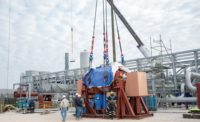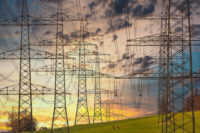New England Faces Power Shortages Without Infrastructure Fix

The cold weather that swept across the Eastern Seaboard in early January is heating up the debate over the need for a more robust infrastructure to deliver natural gas to New England.
The need was highlighted on Jan. 23, when the head of the New England power grid told the Senate Committee on Energy and Natural Resources, “limited fuel infrastructure will eventually cause severe reliability issues if fuel security is not addressed.”
New England has long grappled with natural-gas pipeline constraints, but opponents of new gas pipelines often have prevailed, leaving the region dependent on more-polluting oil during the coldest weather.
During January’s extreme weather, oil-fired generation provided 29% of the electricity supplied by ISO New England, the region’s grid operator, while natural-gas generation, which usually provides about 49% of generation, dropped as low as 17%. The ISO kept the lights on during the cold snap, despite the loss of the Pilgrim nuclear station in Plymouth, Mass. But Gordon van Welie, the ISO’s president and CEO, told the Senate committee the extended cold weather pushed oil-fired generators to their limits.
A recently completed ISO study modeled 23 scenarios and found inadequate fuel supplies would occur in almost every scenario in the winter of 2024-25. “New England could be headed for significant levels of emergency actions, particularly during major fuel or resource outages,” Van Welie told the committee.
In order to build natural-gas pipelines, developers want long-term contracts for the gas from generators. But generators, which sell into the markets, are reluctant to lock into long-term gas purchases or build new generation.
“To deal with a peak-demand problem, it doesn’t make sense to build a base load asset,” or a plant that operates around the clock, Dan Dolan, president of the New England Power Generators Association, notes.
Dolan says some people have been “poking around” at the idea of expanding liquefied natural gas capability in the region. Increasing LNG supplies, which likely would be shipped in, would avoid the pipeline constraints faced by gas supplies coming from western states.
Van Welie does not seem optimistic about the prospects of new natural-gas pipelines materializing “in the near future.” But the resiliency issue is not going away. In fact, it is on the Federal Energy Regulatory Commission’s docket. Van Welie told the Senate committee that the ISO’s approach to the problem is a resource mix with higher levels of LNG, electric imports and renewables.


